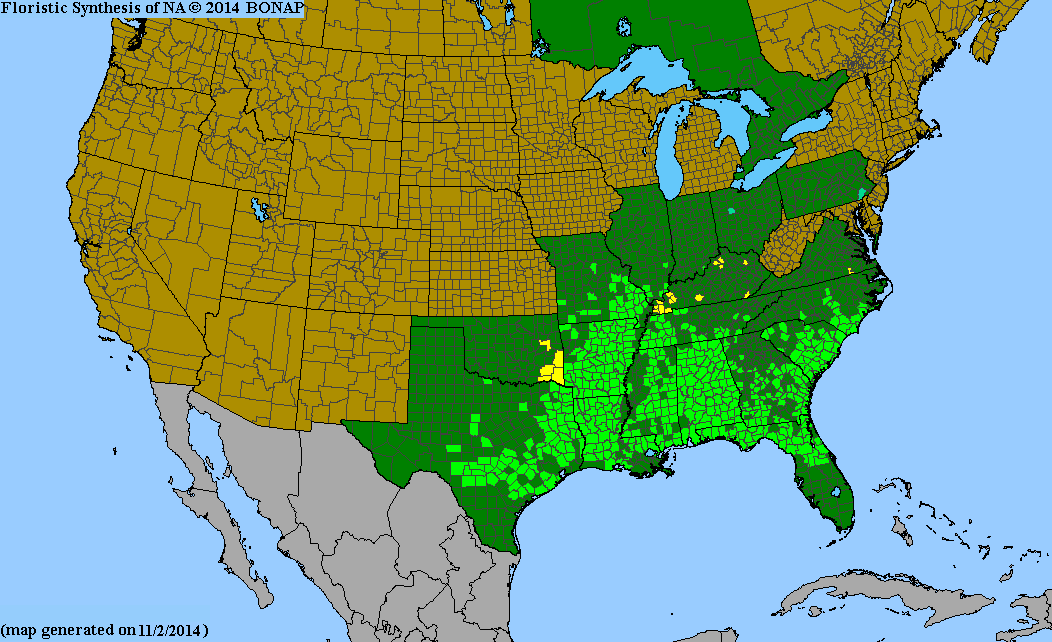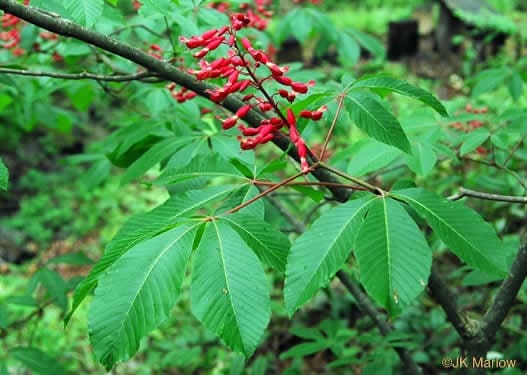Hippocastanaceae
red buckeye
Aesculus pavia
Synonyms
Aesculus discolor
Other Common Names
scarlet buckeye
Plant Type
Small Tree/Large Shrub (10-25 ft)
Life Cycle
Perennial
Typical Size
10-25 ft. tall
10-20 ft. wide
Tolerant of
Deer, Occasional Flooding
Propagation
By seed, By cutting
Plant Propagation Notes
No pretreatment is necessary to germinate seed. Planting should be done immediately after collecting. Seed breaks down quickly due to a high fat content.
Plant Planting Notes
Provide up to 10 ft spacing.
Plants/Diseases
Susceptible to leaf blotch.
Wildlife Benefits
Nectar/pollen source for pollinating insects, Nectar source for hummingbirds
Leaves
Glossy compound leaves are oblong and serrate.
Flowers
Showy red tubular flowers in spring.
Fruit
1-3 inch brown capsule seed pod.
Bark
Grey-brown bark. May develop scaly patches.
Toxicity
Seeds and young shoots are poisonous to humans if eaten.

USDA Hardiness Zones
4, 5, 6, 7, 8
Light Exposure
Part Sun/Shade
Soil Moisture
Medium, Moist
Soil Drainage
Well-drained
Soil pH
Acidic (less than 6.0), Neutral (6.0-8.0)
Native in South Carolina?
Yes
Plant Native Habitat
Wet calcareous habitats including floodplains, hardwood bluffs, blackwater rivers, and maritime forest.
Global Conservation Status (NatureServe)
Secure (G5)
Federal Conservation Status (USFWS)
Not Listed
Distribution Notes
Common in the South Carolina coastal plain and sandhills. Rare in the piedmont. Absent from the mountains.
Subspecies
Aesculus pavia var. pavia
Aesculus pavia var. flavescens

